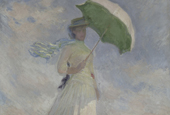-
 Korea.net's 24-hour YouTube channel
Korea.net's 24-hour YouTube channel- NEWS FOCUS
- ABOUT KOREA
- EVENTS
- RESOURCES
- GOVERNMENT
- ABOUT US
A colorful collection of objets d’art, both traditional and modern, has been brought together by around 100 artists, potters, folk-art craftsman, designers and architects in the old Seoul Station building. It is the Ongi exhibition, or Warmth exhibition. It will take place at Culture Station Seoul 284, the new name for the old Seoul Station building, from February 11 until March 9. The exhibition shines a light on the warmth of an artist’s hands, which are a good medium through which to express the passion, the perfection and the skills that the artists demonstrate.
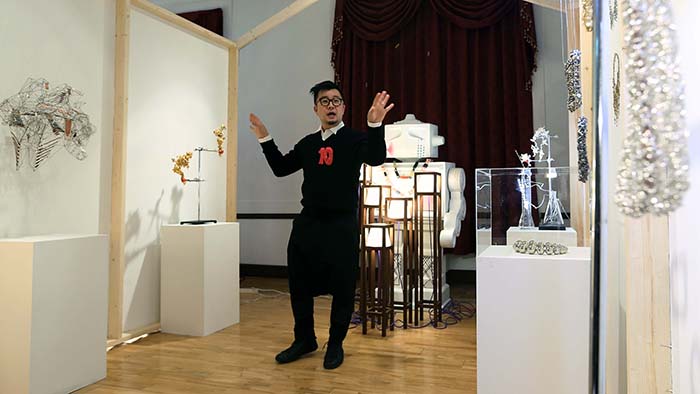
Director Oh Se-won of the Korea Craft & Design Foundation (KCDF) said that the exhibition intends to showcase craftworks that have been completed by the warm hands of artists and which are both beautiful and useful. "The craftwork items on display will give a glimpse into the artists’ passion and life, as well as into their efforts to create social, economic and cultural values through their work,” Oh said. The exhibition showcases nearly 360 works, stretching from handicrafts through to paintings, videos, installation art, design and architecture. It encourages visitors to think about how broadly the scope of “craftwork” or “art” can be defined.
The Ongi exhibition features the “present” of the works of art on the first floor. On display are installation works made by craft masters and collaboration works made by a master and an apprentice.
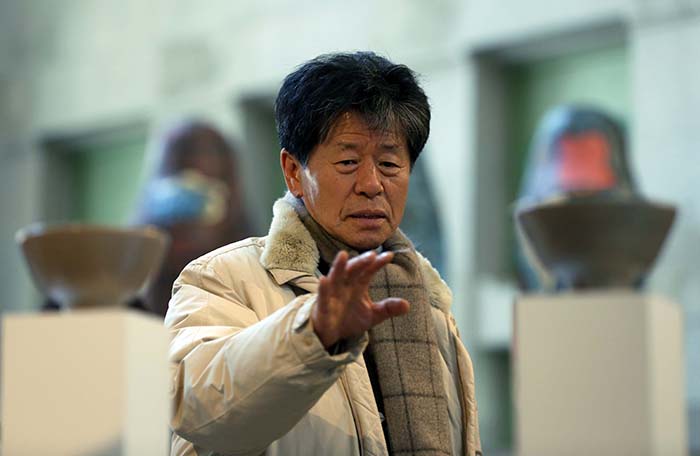
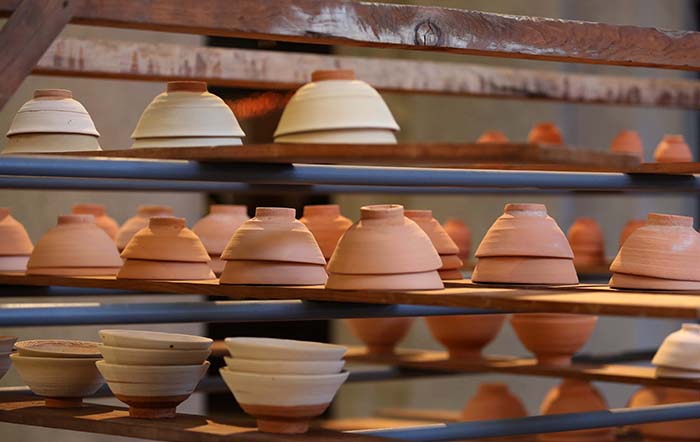
Craftsman Min Yeong-gi, whose work “Chatsabal” is on display in the Central Hall, told his life story on the day of the exhibit’s opening. “In 1973, I went to Japan to learn the craft, on the suggestion of the then Ministry of Culture and Public Information (now the Ministry of Culture, Sports and Tourism). Since then, I have devoted whole my life to making such bowls.”
According to his account, tea bowls can be evaluated by looking at the balance and proportion of their height and width. “To achieve perfection, I spent almost 25 years of my life making ceramic bowls,” said Min. He holds private exhibitions in Japan on an annual basis, and some of his work has been on display at the Victoria and Albert Museum in the U.K., at the Smithsonian Museum in the U.S. and at the Royal Ontario Museum in Canada.
Also on display on the first floor is the work space of artist Shin Sang-ho, known for his craft and sculpture.
Visitors can also see Lee Sung-keun’s “Human+Love+Light,” which demonstrates the relationship between craftwork and the silhouette created by it.
On the second floor, the exhibition sheds light on collaboration and interaction. Various sculptures, paintings and design items are all brought together here. It aims to tear down the boundaries that differentiate between traditional and modern elements and between craftwork and design.
Handicrafts have long been defined as works of art that have both an artistic value and are of practical use. However, a new trend has emerged in the modern artistic world. Artists have begun combining traditional and modern elements and have blurred the distinctions between artwork and commercial products, eventually tearing down the boundaries between craftwork and design. The works of art on the second floor give visitors the chance to look at the importance of cooperation, collaboration and interconnection across genres.
Artist Oh Hwa-jin expresses her beliefs in her work “The Consolation.” It represents, she says, the fact that an individual piece of art or an object has a life destiny to it, too, just as people do. Oh has been known for her drastic approach to new styles of painting and drawing, as well as sculpture. She said, “It is always fun to bring objects to life by elaborating the stories related to them.”
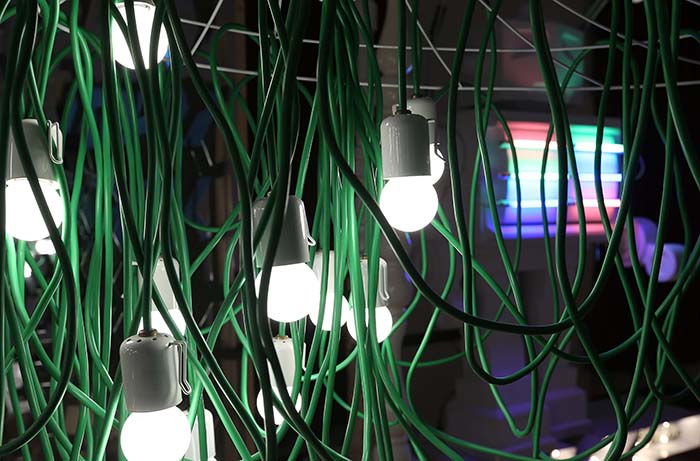
Part of the second floor houses the Collaboration section of the exhibit. Here, visitors are introduced to the work of a 12-artist team lead by craftsman Park Zinoo. The team wants to stress the importance of forming a cooperative relationship between craftsmen and the need for direct communication between artist and consumer. The move has been seen as a new social, cultural and economic approach for the art world.
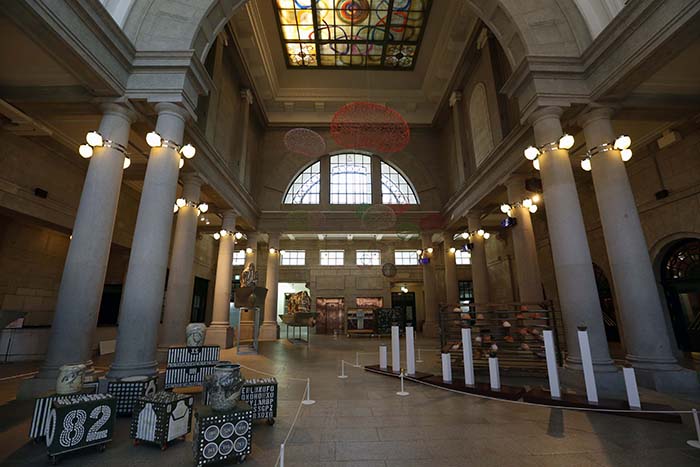
Along with the exhibition, a variety of side events will take place at the old Seoul Station building. There will be a tour program, in which visitors are guided around the building by an expert guide, getting the chance to look around the ins and outs of the old building. Finally, the performance hall next door will host a five-day market selling everything from craftwork and accessories through to furniture.
More details are available at the KCDF website: http://www.kcdf.kr/eng/index.html
By Lee Seung-ah
Korea.net Staff Writer
slee27@korea.kr

Park Zinoo, a craftsman and designer, explains his works of art prepared in collaboration with 11 other artists. The team points to the need for mutual cooperation between artists. (photo: Jeon Han)
Director Oh Se-won of the Korea Craft & Design Foundation (KCDF) said that the exhibition intends to showcase craftworks that have been completed by the warm hands of artists and which are both beautiful and useful. "The craftwork items on display will give a glimpse into the artists’ passion and life, as well as into their efforts to create social, economic and cultural values through their work,” Oh said. The exhibition showcases nearly 360 works, stretching from handicrafts through to paintings, videos, installation art, design and architecture. It encourages visitors to think about how broadly the scope of “craftwork” or “art” can be defined.
The Ongi exhibition features the “present” of the works of art on the first floor. On display are installation works made by craft masters and collaboration works made by a master and an apprentice.

Craftsman Min Yeong-gi explains about his work “Chatsabal,” or “Tea Bowl.” (photo: Jeon Han)

Craftsman Min Yeong-gi devoted nearly 25 years of his life to creating “Chasabal.” (photo: Jeon Han)
Craftsman Min Yeong-gi, whose work “Chatsabal” is on display in the Central Hall, told his life story on the day of the exhibit’s opening. “In 1973, I went to Japan to learn the craft, on the suggestion of the then Ministry of Culture and Public Information (now the Ministry of Culture, Sports and Tourism). Since then, I have devoted whole my life to making such bowls.”
According to his account, tea bowls can be evaluated by looking at the balance and proportion of their height and width. “To achieve perfection, I spent almost 25 years of my life making ceramic bowls,” said Min. He holds private exhibitions in Japan on an annual basis, and some of his work has been on display at the Victoria and Albert Museum in the U.K., at the Smithsonian Museum in the U.S. and at the Royal Ontario Museum in Canada.
Also on display on the first floor is the work space of artist Shin Sang-ho, known for his craft and sculpture.
Visitors can also see Lee Sung-keun’s “Human+Love+Light,” which demonstrates the relationship between craftwork and the silhouette created by it.
On the second floor, the exhibition sheds light on collaboration and interaction. Various sculptures, paintings and design items are all brought together here. It aims to tear down the boundaries that differentiate between traditional and modern elements and between craftwork and design.
Handicrafts have long been defined as works of art that have both an artistic value and are of practical use. However, a new trend has emerged in the modern artistic world. Artists have begun combining traditional and modern elements and have blurred the distinctions between artwork and commercial products, eventually tearing down the boundaries between craftwork and design. The works of art on the second floor give visitors the chance to look at the importance of cooperation, collaboration and interconnection across genres.
Artist Oh Hwa-jin expresses her beliefs in her work “The Consolation.” It represents, she says, the fact that an individual piece of art or an object has a life destiny to it, too, just as people do. Oh has been known for her drastic approach to new styles of painting and drawing, as well as sculpture. She said, “It is always fun to bring objects to life by elaborating the stories related to them.”

The Collaboration section of the exhibition gives a glimpse into art work completed by 12 artists working together in harmony. (photo: Jeon Han)
Part of the second floor houses the Collaboration section of the exhibit. Here, visitors are introduced to the work of a 12-artist team lead by craftsman Park Zinoo. The team wants to stress the importance of forming a cooperative relationship between craftsmen and the need for direct communication between artist and consumer. The move has been seen as a new social, cultural and economic approach for the art world.

The Central Hall of Culture Station Seoul 284, the old Seoul Station building, is adorned with installation art. (photo: Jeon Han)
Along with the exhibition, a variety of side events will take place at the old Seoul Station building. There will be a tour program, in which visitors are guided around the building by an expert guide, getting the chance to look around the ins and outs of the old building. Finally, the performance hall next door will host a five-day market selling everything from craftwork and accessories through to furniture.
More details are available at the KCDF website: http://www.kcdf.kr/eng/index.html
By Lee Seung-ah
Korea.net Staff Writer
slee27@korea.kr
Related Contents
Most popular
- China warmly welcomes first Korea-born giant panda Fu Bao
- First hearing-impaired K-pop act hopes for 'barrier-free world'
- Novelist Hwang's 'Mater 2-10' shortlisted for Int'l Booker Prize
- Expats could account for 7% of population in 20 years: report
- Nat'l Fire Agency picks 137 elite staff for deployment abroad










